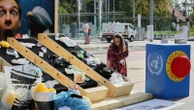The nation’s electronic vehicle charging network is getting more reliable—and Tesla Superchargers are leading that advancement.
To get more people into electric vehicles, we need a robust EV charging network. That doesn’t just mean having accessible chargers; it means public chargers must be reliable, offer a good customer experience, and can’t be too expensive.
For years, public chargers have been plagued with reliability issues. A 2024 study found that one in five EV charging attempts at public stations fail.
“Imagine if you go to a traditional gas station and two out of 10 times the pumps are out of order,” study lead Omar Asensio told Harvard Business School at the time. “Consumers would revolt.”
President Donald Trump has also thrown the state of the EV charging network into question. In February, he paused funding for the National Electric Vehicle Infrastructure (NEVI) program, cutting off millions of dollars for EV chargers. (This week, Trump allowed NEVI’s $5 billion in funding to keep flowing to states, with revised guidelines.)
Still, despite that pause, the EV charging network has been growing. And there’s been progress with the state of those public EV chargers, according to J.D. Power, which today released findings from its 2025 U.S. Electric Vehicle Experience Public Charging Study.
‘Non-charging visits’ are declining
The top takeaway is that the EV charging network is the most reliable it’s been in years. Just 14% of EV owners say they visited a charger without successfully charging their vehicle.
A “non-charging visit,” as J.D. Power calls it, could occur because of wait times at public chargers, but the majority of such visits happen because the charger is out of service or not working properly.
That’s down five percentage points from 2024, and marks the lowest level in four years. It also matches the all-time low since J.D. Power began tracking these visits in early 2021.
Tesla Superchargers have the lowest percentage of failed charging visits, at just 4%. Other charging companies including Electrify America (6%), Red E (10%), and EVgo (12%) were all below that average for failed visits as well.
Tesla chargers: Satisfaction is high but declining
Tesla also leads the EV charging companies in terms of customer satisfaction—but that satisfaction has dipped.
On a 1,000-point scale, Tesla Superchargers have a customer satisfaction with a score of 709—the top of the J.D. Power study, but also a 22-point drop from last year.
Other EV charging networks, including the Mercedes-Benz Charging Network, Rivian Adventure Network, and Ford Charge collectively earned a satisfaction score of 709 as well, but these weren’t ranked in the study because of their limited footprint.
J.D. Power measures satisfaction across multiple factors, like speed, the physical condition of charging station, things to do while charging, safety, cost, and how easy it is to pay.
‘Very easy to use’—if you drive a Tesla
Tesla’s drop in satisfaction seems to come mostly from non-Tesla owners.
“Tesla has facilitated an experience for its owners by creating an optimal technical environment that makes the charging process very easy to use and complete payments,” says Brent Gruber, executive director of the EV practice at J.D. Power. “That process isn’t quite as streamlined for non-Tesla owners.”
Non-Tesla owners using the Superchargers are particularly less satisfied than Tesla owners with the cost of charging; non-Tesla drivers are often charged a higher per-kWh rate.
Tesla has faced a challenging year, with sales plunging as EV drivers look to distance themselves from CEO Elon Musk. Tesla owners have also been trading in their EVs at all-time-high levels.
Charging costs are a concern for EV drivers across vehicle and charging types, though. Satisfaction with charging costs for both Level 2 and DC fast chargers dropped to 459 (down 16 points) and 430 (down 16), respectively, on a 1,000-point scale.
Some of that may be because new fast charging networks kept their prices low as they built out their presence, and because free charging was sometimes a perk for new EV purchases.
Electricity rates have also been rising across the country, which affects EV charging prices.






No comments